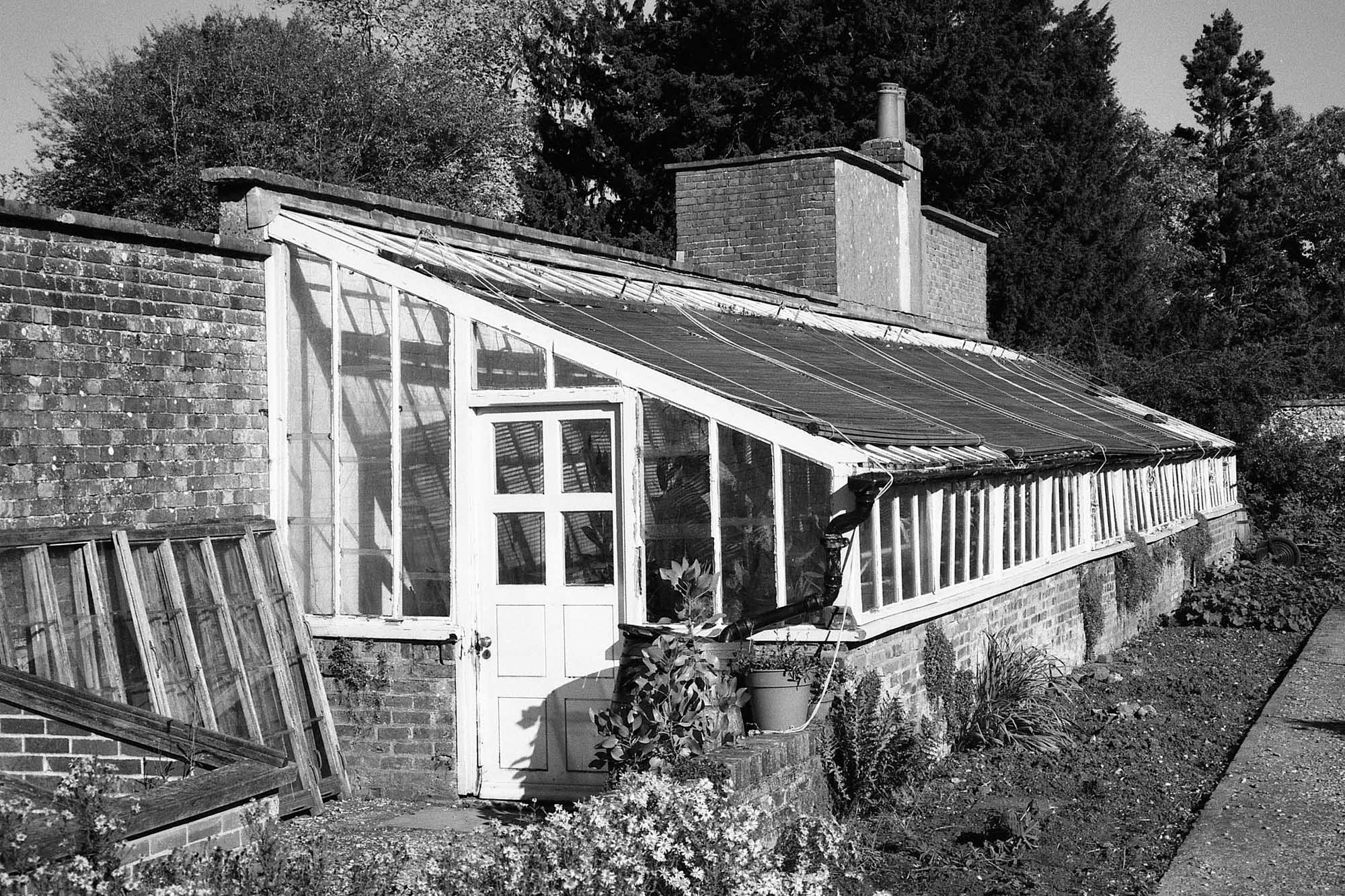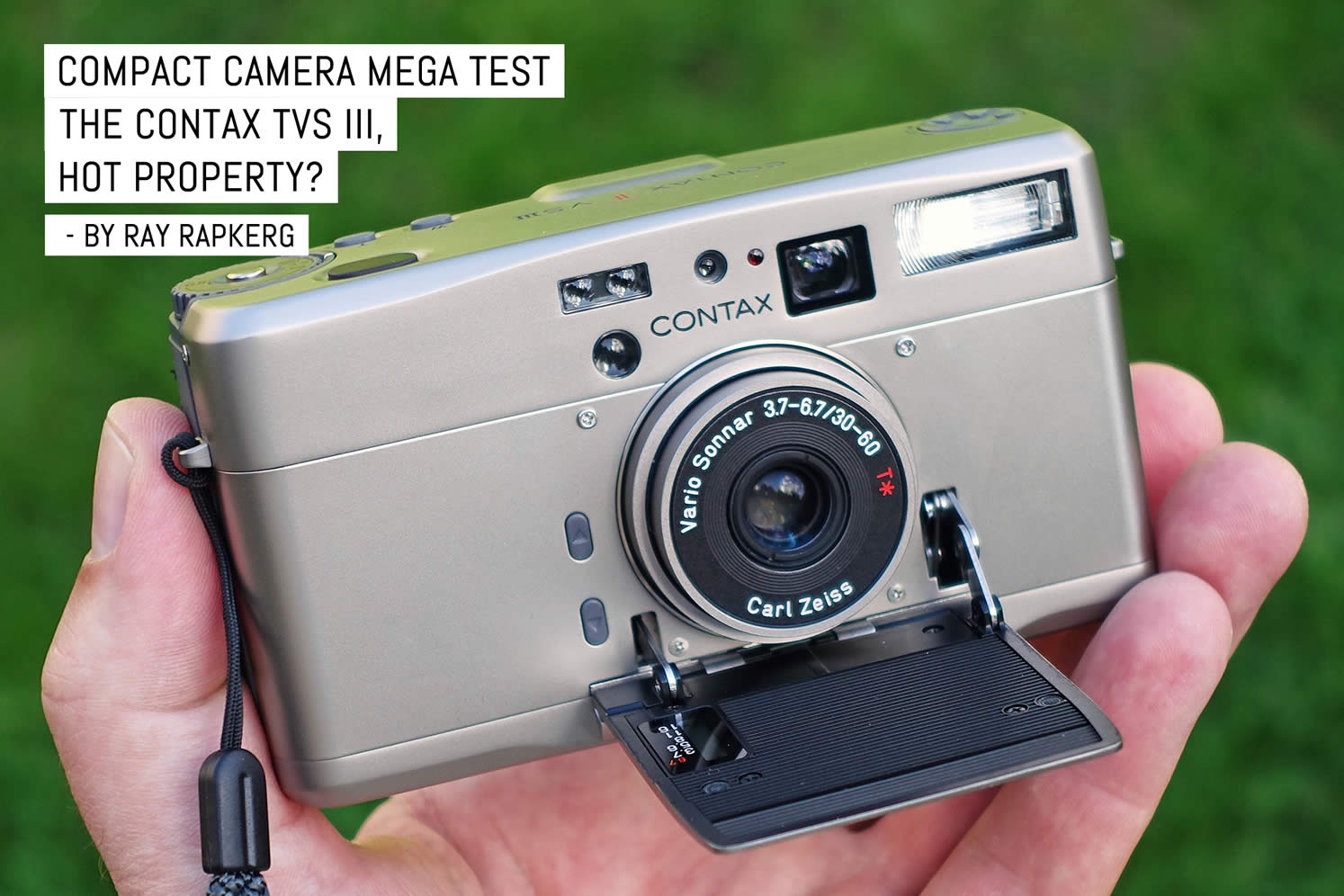Welcome to the third in my series of quick compact 35mm camera reviews. Over the coming weeks, I’ll be publishing a total of 12 of these articles as part of an upcoming 35mm compact camera mega test spanning cameras made from 1990 to 2003 – arguably the golden age of these pocketable beasts. You can find the full list of cameras being tested and the finale here.
I’ll be comparing image quality, durability, speed and overall performance for cameras ranging from the very high end of the 35mm compact camera world to the very low – or close to it. The final articles will cover my criteria and scoring in full. At over 12,000 words in total, it seems a sensible approach to break these mini-reviews out, rather than trying to cram everything onto a single page.
Parts one and two, which covered the Contax T2 and T3 are already up for you to check out, so let’s crack on with my quick review of their zoom lens sibling, the Contax Tvs III.

The Contax T2 is hot property, the compact de jour, if you will. The Contax Tvs III is basically a T2 with a zoom lens. It’s also much cheaper, so the Tvs III should also be hot property, right? I think people fear it might be less sharp. Is that true?
Let’s find out.
As soon as I started to use the Contax Tvs III, I noticed that it worked well. It is far quicker than the cheaper zooms such as the Olympus Mju Zooms. I really enjoyed using the Tvs III, so I hoped the sharpness would turn out well. As it turned out, I was quite amazed by the results: I found the Contax Tvs III to be as sharp as the premium prime-lens compacts.

Perhaps the Contax zoom lens achieves such impressive sharpness because the zoom range is so limited. Zeiss seems to have perfected the 2x zoom, which is not exactly a superzoom. One day, I wanted to do some street photography on the way to a studio fashion photoshoot. Which camera should I take? I immediately thought of the lovely little Contax T3. But no, that 35mm lens would be hopeless for headshots in the studio.
I took the Contax Tvs III: the 35mm end of the zoom was great for the street, and the 60mm end was great for headshots. The fact that one simple little camera could cover two completely different requirements shows the versatility of this camera. Overall, I rate the Contax Tvs III really highly. It works so much better than the plasticky superzooms. This is how I see it: the cheap cameras are burdened by their zooms, while the Contax Tvs III is empowered by its zoom.



There were two other Tvs models before the Tvs III. The Tvs and Tvs II both had 28-56 zooms. The Tvs III gained a slightly sharper 30-60 zoom (f/3.7-6.7). The Tvs I and II have manual zoom rings, which I find really nice to use. The Tvs III has a motorised zoom operated by two tiny buttons. The Tvs III has a novel ‘drawbridge’ door over the lens. The drawbridge opens down to form the bridge across the moat. I suspect some people will find it a bit gimmicky.
The Tvs III offers custom functions like the T3. I like to leave the film leader out, and set fast focusing, so I change “CF1” to 1 and “CF2” to 1. Page 166 of the manual explains how to set custom functions. Being able to set fast focusing is a huge benefit, in my view.
I feel the Contax Tvs models are great value for money – almost a bargain, if any Contax could be considered as one! My hunch is that the Tvs range might be the next big thing.
Consider this: Mario Testino does photoshoots for Vogue using a Contax Tvs III.
Thanks for reading,
~ Ray
Contax Tvs III technical specifications
| Manufacturer | Kyocera Corporation |
| Release date | 1991 |
| Camera name | Contax Tvs III |
| Camera type | Point and shoot |
| Format | 35mm |
| Image size | 24 x 36 mm |
| Lens | Carl Zeiss T* Vario Sonnar 30-60mm f/3.5-6.7 (6 elements in 5 groups, f/3.5-f/16) |
| Viewfinder | 0.42x~0.76x magnification & 83% field of view at 3m -3.5 to +2 built-in adjustable diopter Picture frame, close focus frame, focus frame, shutter speed, exposure compensation, focus indication, flash ready, program indicator |
| Shutter | Between-the-lens shutter, electromagnetic control 16 – 1/1000s |
| Focusing | Auto/manual focusing (switchable), each with focus dial External passive AF system with focus lock |
| Metering | Aperture priority with SPD cell (EV 0 – 18) +/-2 EV in 1/3 EV steps DX-coded films, auto ISO (25 – 5000) Non-DX defaults to ISO 100 |
| Flash | Built-in zoom flash; exposure control by flashmatic system and by guide number control Modes include auto-flash, automatic flash with red-eye reduction, fill-in flash, night portrait with red-eye reduction, flash off 6 second flash recycle |
| Loading | Auto (winds to first frame) |
| Date/time stamp | Built-in date back, opens and closes with release knob |
| Weatherproofing | Minimal |
| Power | 1 x 3V CR2 or equivalent |
| Weight | 311g (without battery) |
| Dimensions (appx) | 118 x 36.5 x 63.5mm (WxDxH) |
| Accessories | SA-1 flash adapter |
Share your knowledge, story or project
The transfer of knowledge across the film photography community is the heart of EMULSIVE. You can add your support by contributing your thoughts, work, experiences and ideas to inspire the hundreds of thousands of people who read these pages each month. Check out the submission guide here.
If you like what you’re reading you can also help this passion project by heading over to the EMULSIVE Patreon page and contributing as little as a dollar a month. There’s also print and apparel over at Society 6, currently showcasing over two dozen t-shirt designs and over a dozen unique photographs available for purchase.








3 responses to “Compact camera mega test: The Contax Tvs III, hot property?”
Compacts with a fixed lens stand out of the sea of compacts with zooms exactly for that one reason, being fixed focals. Making some fake research ending with some fake appraisal will not change what photographers did know right in the 90s. Or maybe photographers became dumber and looking to play (let’s try this and act surprised, let’t try the next one an be also surprised, just not invest time in knowing our tools right) instead of producing results.
So eugen, what exactly are you saying? That Ray falls short for finding an exception to the usual inadequate zoom-compact? That a casual analysis of usability (based on use) and of performance (based on looking at the results) is somehow fake? That it’s dumb to explore outside your familiar toolbox? Whew! Thank you for helping me see these truths: I’ve been so misguided up to now.
Well, that is such a generalization that it’s not even funny. I have the TVS III and the Rolle QZ35T since the two decades and their lenses are magnificient. I have also the Leica Minilux and Contax T as well as Leica M with summicron 35mm. The lenses are equal if not better than all those. So what do you say now?